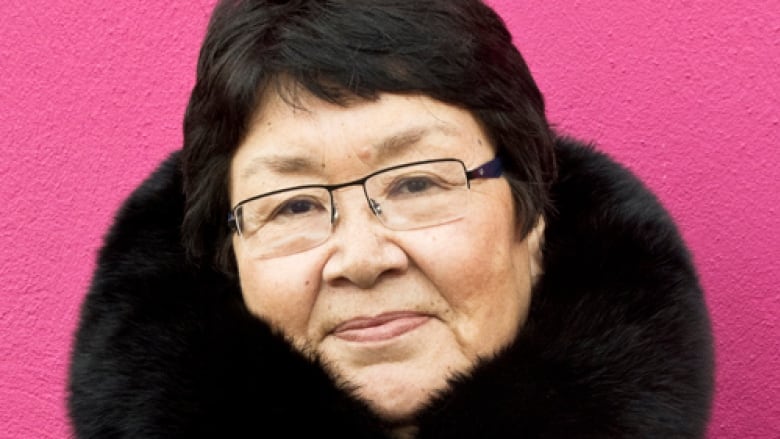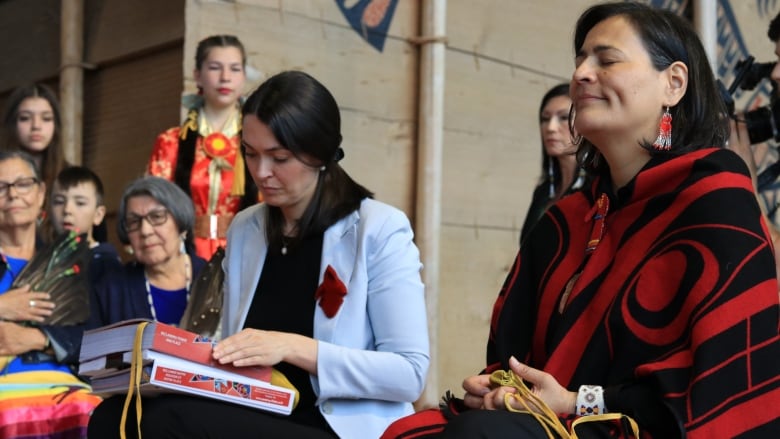Canadian Inuit women’s org says throne speech sent the right signals

Pauktuutit Inuit Women of Canada, an organization that represents Inuit women in Canada, says Wednesday’s throne speech sent the right signals on some of their key issues including shelter investment and police oversight.
In Canada, the speech from the throne opens a new session of Parliament and sets out the government’s priorities.
In the runup to the speech, Pauktuutit outlined three key areas it hoped to see addressed: $20 million to build five shelters for Inuit women, four in the Inuit regions of Canada’s Arctic, and one in Ottawa, which has a large Inuit population; the implementation of 15 policing recommendations put together by Pauktuutit that they say would improve the safety of Inuit women; and programing increasing access to affordable housing and skills training opportunities for Inuit women.
Wednesday’s speech focused heavily on health and economic recovery from COVID-19, and although there were few Arctic-specific priorities outlined, Pauktuutit said the commitment to general shelter investment, police oversight and the government’s pledge for a “feminist and intersectional” recovery were promising.
“Pauktuutit applauds the government’s commitment to an intersectional response and recovery with a focus on women, including increased support for women entrepreneurs and the creation of an Action Plan for Women in the Economy,” Rebecca Kudloo, Pauktuutit’s president, said in a news release on Thursday.

MMIWG commitments
During the speech, the government promised to continue work on reconciliation, one of the cornerstone policies of Canadian Prime Minister Justin Trudeau that seeks to redefine the relationships between the government and Canada’s Indigenous peoples.
In the speech, the government also pledged to continue working on implementing recommendations of the 2015 Truth and Reconciliation Commission report as well as the calls to justice from the 2019
National Inquiry into Missing and Murdered Indigenous Women and Girls (MMIWG).
A national action plan was expected in June, but at the end of May, the federal government said the process had been derailed by the COVID-19 pandemic and that it wasn’t possible to give a time line for when it might be finished.
“Pauktuutit is pleased to see a commitment to getting the MMIWG national action plan delivered, as soon as possible,” Kudloo said. “The development of this strategy must fully involve Inuit led organizations and be respectful of the families of our missing and murdered women and girls.”

- Canada’s National Inquiry into Missing and Murdered Indigenous Women and Girls (MMWIG) was announced by Trudeau in 2015 after calls from many Indigenous leaders, groups and organizations to examine the high rates of violence against indigenous women in Canada.
- The final report was issued on June 3, 2019 with 231 calls for justice, with 46 Inuit-specific recommendations that included everything from the need for better mental health services in the Arctic to the need for urgent action on the housing crisis.
In the throne speech, the government pledged to continue work on its Canada-wide Gender-Based Violence Strategy as well as investing in new shelters but did not specify whether any resources for shelters would be earmarked for the North.
“We look forward to learning more details about these critical promises in the coming weeks and to working with the government to turn these commitments into concrete actions,” Kudloo said.
Write to Eilís Quinn at eilis.quinn(at)cbc.ca
Related stories around the North:
Canada: Northerners hopeful after Canadian throne speech, CBC News
Denmark: COVID-19 could delay Kingdom of Denmark’s Arctic strategy, Eye on the Arctic
Finland: Sámi reconciliation process gains final approval in Finland, Yle News
Iceland: Iceland extends bar, nightclub COVID-19 closures in capital area until September 27, Eye on the Arctic
Norway: Are potential Arctic security threats eclipsing urgent action on climate? A new study makes its case, Eye on the Arctic
Russia: Russia removes critical voices ahead of Arctic Council chairmanship, claims Indigenous peoples expert, The Independent Barents Observer
Sweden: Twenty-five Indigenous Sami remains returned by museum are reburied in northern Sweden, Radio Sweden
United States: Indigenous communities in Alaska harder hit by COVID-19, The Associated Press




The Throne Speech’s reference to an acceleration of Canada’s development of a national pharmacare plan, along with other progressive measures, is likely in exchange for needed NDP support of the shaky Liberal minority government.
Liberal and Conservative governments have consistently allowed us to remain the world’s sole country that has universal healthcare but does not similarly cover prescribed medication, however necessary.
Assuming it’s not just another hollow promise of universal medication coverage, why has it taken so long for a Canadian federal government to implement one?
(And considering it’s a potential life-and-death issue, why has our news-media not pursued it far more than it has?)
Not only does this make medication affordability much harder, but many low-income outpatients who cannot afford to fill their prescriptions end up back in the hospital system thus costing far more than if their generic-brand medication was covered.
Logic says, we cannot afford to maintain such an absurdity that costs Canada billions extra annually.
It’s not coincidental that the absence of universal medication coverage also keeps the pharmaceutical industry’s profits soaring.
Without doubt, its lobbyists in Ottawa are well worth their bloated salaries.